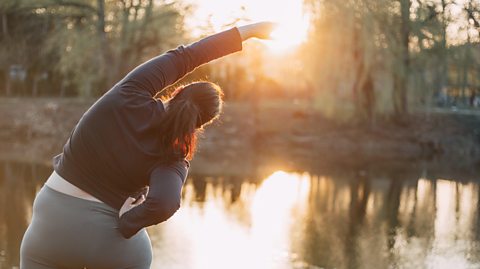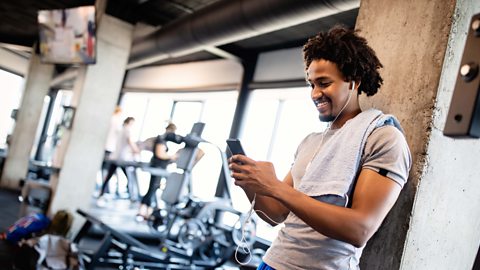Could this food movement kick-start your love of exercise?

Have you recently resolved to embark on a healthier diet and fitness regime, but are starting to feel bad about yourself because you’re struggling to keep it up?
According to research by , last year, the majority of people weren't able to keep up all of their New Year resolutions.
But rather than set unrealistic expectations to begin with, Fitness coach Tally Rye, believes we need to have a kinder attitude to ourselves.
The personal trainer is a big believer in 'intuitive movement'. Below, Tally explains exactly what it means to her and most importantly, gives top tips on how we can all establish a healthy relationship with exercise.
Are we thinking about exercise all wrong?
“In my earlier 20s, I had a quite obsessive and controlling relationship with food and exercise," says Tally.
While at drama school she wanted to be fit and healthy, but all the advice she found online focussed on cutting out foods and weight loss. "I went along with that information, and didn't realise until it was too late, that I'd become obsessive."
Tally realised she couldn‚Äôt continue along this path, which is when she discovered intuitive eating. ‚ÄúIt put so many pieces into place. The framework makes you dissect and re-evaluate your relationship with food.‚ÄĚ
Intuitive eating is regarded as "an anti-diet". It follows principles including avoiding labelling food as 'good' or 'bad', eating when you're hungry and stopping when you're full, and focusses on making sure you enjoy your food.
"Just as our relationships with food can be complicated, so can our relationships with exercise, and I felt there needed to be something comprehensive for exercise too, so I was really drawn to this idea of intuitive movement," says the London-based personal trainer.
‚ÄúIntuitive movement is an extension of intuitive eating,‚ÄĚ explains Tally. The key aim is to move away from ‚Äėdiet culture‚Äô. ‚ÄúIt's about changing the mindset behind why you're choosing to move and caring for your body rather than punishing it,‚ÄĚ says Tally.
So, when it comes to exercising the intuitive movement way, the same principles that apply to food, can be applied to exercise too: seeking pleasure from the exercise you do, doing it at a time that's right for you and stopping when you want to. Essentially, putting yourself in control rather than following traditional rules which may not suit you.
The approach uses your enjoyment as a motivation for moving your body, rather than what you look like ‚Äď so no more before and after pictures! The idea is you learn your body's internal cues when thinking about what type of exercise you'd like to do and how long you'd like to do it for.
Just One Thing - with Michael Mosley
Exercise Less, More Often

Finding what works for you
Discovering exactly what motivates us to exercise is key. Back in 2012, highlighted that when exercise is externally-prescribed, or utilitarian, "such as might be prevalent in fitness clubs", and not personal to individuals, there was a higher drop-out rate, suggesting it may not encourage long-term exercise.
In comparison, the research showed that internal motivation, such as setting personal goals and values, often leads to regular participation in physical activity, as "the person experiences feelings of enjoyment, the exercise of their skills, personal accomplishment, and excitement‚ÄĚ.
More recently, has highlighted that our motivation to exercise can greatly be impacted by how we are feeling in the moment.
Basically, not everyone is motivated by the same things, at the same time. Some people may want to exercise shortly after waking up - to help feel alert for the day. Others may find setting a personal record in an activity rewarding, and for others, it could be the social aspect of a class or sport.
Tally advises writing down the kind of benefits you feel when you move. ‚ÄúWhen I'm lifting something heavy in the gym and I feel physically stronger, that gives me confidence,‚ÄĚ she says, adding a ‚Äúteam mentality‚ÄĚ from sports and getting out into green spaces relaxes her and helps her mental health.
‚ÄúI feel much less stressed and able to cope with the day.‚ÄĚ
In the same way we try various recipes and discover different dishes we enjoy, Tally explains you don’t have to limit yourself to one activity either, you can try many things and stick at the ones you get on with.
Related stories
Tally and dietitian Tai Ibitoye discuss when you should eat around your workout.
Start small
While the recommend at least 150 minutes of moderate intensity activity a week or 75 minutes of vigorous intensity activity a week, if you don‚Äôt ‚Äď or can‚Äôt ‚Äď do that amount, don‚Äôt let it put you off doing what you are able to do.
In Tally‚Äôs experience, when people don‚Äôt have time or the fitness levels to do the recommended amount of exercise, they may not do any at all. "Any movement is better than none," she says, adding: ‚Äúintuitive movement is about taking away the pressure and not having rigid rules and instead saying, 'I'm just doing my best with what I can achieve this week, or this month or today‚Äô.‚ÄĚ
You can find smaller activities to do which works around your schedule, while being fun and achievable. You don’t need to hit the gym for an hour a day (unless you want to). Walking, housework and gardening are all physical activities.
‚ÄúAdding discipline, routine and structure to your life is not a bad thing,‚ÄĚ says Tally, but if you‚Äôre just starting out, short on time, or recovering from illness or injury Tally points out it‚Äôs important to have an element of compassion and understanding with yourself.
Avoiding harmful advice

Tally’s top tips for exercising using intuitive movement:
‚ÄúIf people make you feel bad about yourself, and make you feel ashamed of your body in some way, those are key red flags to ignore their advice.‚ÄĚ
‚ÄúIgnore the idea that exercise is just to burn off food. This discredits the benefits of regular exercise on mental health, longevity, sleep and could create a harmful mindset about your body and food.‚ÄĚ
‚ÄúIgnore the voices telling you ‚Äėno pain, no gain‚Äô, and that everything you do should be exhausting, painful and punishing. Intuitive movement is all about making you trust yourself more. If it doesn't feel right for you, be it on a physical or mental level, don‚Äôt do it!‚ÄĚ
‚ÄúIt doesn‚Äôt need to be all-or-nothing. It‚Äôs important to get realistic about your life, time and energy levels, to find out what is achievable for you long-term. Whether that is walking to places you would have driven to in the past or just getting outside more. Slowly introducing physical activity is much more sustainable than trying to do too much, too quickly.‚ÄĚ
This article was originally published in January 2022.